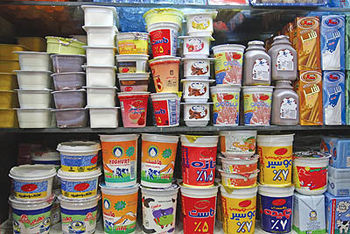
According to the instructions issued by the Food and Drug Administration and the Standards Organization, the Consumers and Producers Protection Organization and the Ministry of Silence, factories are required to enter information such as production and expiration dates and product prices, and if this is not done, it is a violation.
The inspector of the board of directors of the Iranian Dairy Industry Association explained how to enter information such as production date, expiration date and price on dairy products.
Ismail Khatami Moghaddam in response to the question why sometimes on some dairy products the price, date of production and expiration are stated illegibly and not at all, while knowing the basic rights of the consumer when The purchase of the desired product is stated: According to the instructions issued by the Food and Drug Administration and the Standards Organization, the Consumers and Producers Protection Organization and the Ministry of Silence, factories are required to enter information such as production and expiration dates and product prices. Failure to do so is a violation.
He continued: "Usually, reputable brands do not enter this information in a way that is not legible." But sometimes there are limitations that may change the way information is entered. For example, according to the labeling law, there is a large amount of information that must be included on the product label. This information includes address, contents, nutritional value, etc. and is printed on the package in the printing house. Production, expiration dates, and prices may interfere with this information and the designs made when they are inserted on the product and may not be clearly visible.
The dairy industry expert pointed out that sometimes in the packaging design of products, there is no space for inserting this information because it damages the aesthetics, adding: the date of production, expiration and price are not printed information and on the final products Will be printed. The rail speed at which the products are placed to insert information may be increased or decreased, or the container may be designed in such a way that this information is not placed in the wrong place.
According to him, of course, some people may intend to hide by not entering or distorting this information, but they will not have a place in today's competitive world.
Khatami Moghaddam stated: Production and expiration dates and prices are variable parameters. This means that the date must be entered on the same day of production and the price is constantly changing. Therefore, they can not be inserted in the printing house like other printed information.
Asked if the information printed on the product could not be tampered with, he said: "A seller may try to erase or distort the text with a solvent, but when you erase this information, part of the printed information will also be erased." On the other hand, if the production unit realizes this issue, it will definitely deal with it.
The inspector of the board of directors of the Iranian Dairy Industry Association continued by stating that the price and date of production are not listed in any of the foreign brands in the world. It does not charge a price and this is the responsibility of the supplier. On the other hand, only the product has an expiration date. This means that the manufacturer informs the consumer that I am responsible for the use of this product until a certain date and after that there is no obligation towards it. This process is due to the existence of a healthy distribution system. A healthy distribution system supports the health of the product in the distribution cycle.
He added: In our country, the distribution system is not structured. Many goods are not stored at the right temperature. Even if the factory has an expiration date and production, this cycle will not be complete as long as stores keep dairy products, especially milk and buttermilk, out of the refrigerator and sometimes out of the shop. On the other hand, according to the statistics we have obtained, 85% of the refrigerators available in stores have a temperature of more than 10 degrees Celsius, while the temperature should be lower than that.
In the end, Khatami said: "The distribution system has high quality and economic costs and uses the interests of producers and consumers to their advantage, and this system must be reformed."
«« Back
Date:9/1/2020